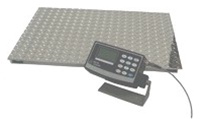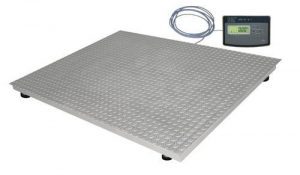 In many different environments, hazardous wastes must be carefully controlled. These can include a wide variety of medical areas including doctors’ offices, nursing homes, clinics, and hospitals. Other types of hazardous materials, including radioactive wastes, are also carefully controlled to prevent sickness
In many different environments, hazardous wastes must be carefully controlled. These can include a wide variety of medical areas including doctors’ offices, nursing homes, clinics, and hospitals. Other types of hazardous materials, including radioactive wastes, are also carefully controlled to prevent sickness
Any such refuse can endanger the public if not properly documented. That is why hazardous weight weighing is important, for record-keeping. In the case of a real disaster, such as in Chernobyl or Fukushima, the data can provide answers and accountability. It can also identify causes and effects, and allow damage control operators to find solutions.
Depending on the nature of the material, the waste may need to be collected and stored in clearly marked containers. These containers may have to be locked in ways that avoid accidental exposure or inappropriate access. Usually, there also need to be methods to document all of the materials. Scales help with accurate documentation so that you won’t lose track of any hazardous substances.
Industrial Weighing And Waste Management
One of the best ways to monitor hazardous waste material is by weight. The containers used to store this weight may either constantly sit on a scale, or they may be placed on the scale as they are filled. Your waste management setup will determine one or the other, especially when factoring in safety for the human operator.
Depending on the type of waste container, the appropriate scale may be an electronic bench scale. This works for relatively smaller volumes. If the container is larger, a platform scale or a drum scale will be the correct choice. For very large containers, floor scales will have the ability to weigh them. Some larger ones are even designed to weigh trucks containing waste.
The industrial scales themselves must be properly chosen for the environment in which they will be used. For medical applications, it is often best to use digital scales that are constructed from stainless steel. This allows the scale to be washed down either while the container is sitting on the platform or after it is removed.
 The digital display should also be sealed and fitted with a gasket so that any water that may be splashed on it will not cause any problems. You don’t want the electronics to short out while ensuring that sterilization happens.
The digital display should also be sealed and fitted with a gasket so that any water that may be splashed on it will not cause any problems. You don’t want the electronics to short out while ensuring that sterilization happens.
Most importantly, the load sensors of the scale chosen should be constructed from stainless steel. This is certainly necessary for any washdown environment, but it is also important even in a dry situation. Stainless steel load sensors can withstand shock loads and overloads that the other type of material typically used, aluminum.
If the waste containers are being placed onto the electronic scale manually, or even with a forklift, it is quite possible that it will occasionally be dropped onto the platform. This can cause large, instantaneous shock loads which will quickly destroy load sensors that are made from aluminum. That can destroy significantly reduce your scales’ shelf life, skew the results, and drastically increase costs.
Stainless steel is much better than even plated steel load sensors. The digital scale being used should have a display that is easy to read. Large graphics digits are the best way of providing a reading that will avoid errors in recording, even if it is being used in poor light conditions. We recommend using LCD displays for this purpose, as opposed to LEDs.
The scale should also have the ability to weigh in a variety of units, such as kilograms, grams, pounds, and ounces. This will provide data that is most useful for the specific application. Often, it is necessary that the data is recorded. Don’t forget to set the units of measurement ahead of time, for consistency purposes.
The most common method of doing this is to simply hand write the weights into a chart. Of course, this is prone to error. Also, it has very little security. It is generally better to send the data to a computer and record it there. As an added bonus, the business can then record patterns and trends for analysis. To do so, the scale must be equipped with a data communication port. The most common means has traditionally been an RS-232 channel.
Many scales and other industrial instruments have provided this type of connection. Traditionally, most personal computers included RS-232 ports to receive this type of data. But more recently, the computer industry has been eliminating the RS-232 port. Instead, computers are now provided with multiple USB (Universal Serial Bus) ports and Ethernet ports.
While most industrial instruments do not provide this type of connectivity, the higher quality scales, such as those from Arlyn Scales, do provide those options. The USB port on these industrial scales can be directly connected to the personal computer. A Windows-based software application takes the data from the scale and automatically inserts it into either an Excel spreadsheet or a database table that can be read by Access.
Using these tools, accurate data can be securely recorded, including the date and time of measuring the weight. Password protection may be enabled on these files. Hard copy reports can only be printed by those who have access to the correct password.
It is also possible to forward this data directly from the computer to a central office, or a monitoring organization. This gives further security options and allows you to create backups of data.
Perfect Your Waste Generators With Arlyn Scales
Arlyn Scales wants to provide businesses and manufacturers with the ideal scales for their conditions We have spent years making sure our weighing equipment has accuracy, precision, and sensitivity to waste and other products. In addition, our engineers can recommend scales that prioritize operator safety in the case of hazardous environments.
Reach out to us today to find your ideal waste weighing system. Whether you are handling lead, medical refuse, or radioactive material, we have you covered. Let us take you beyond physical fallout from landfills and toxic dumps, to ensure proper disposal and accurate record-keeping.

